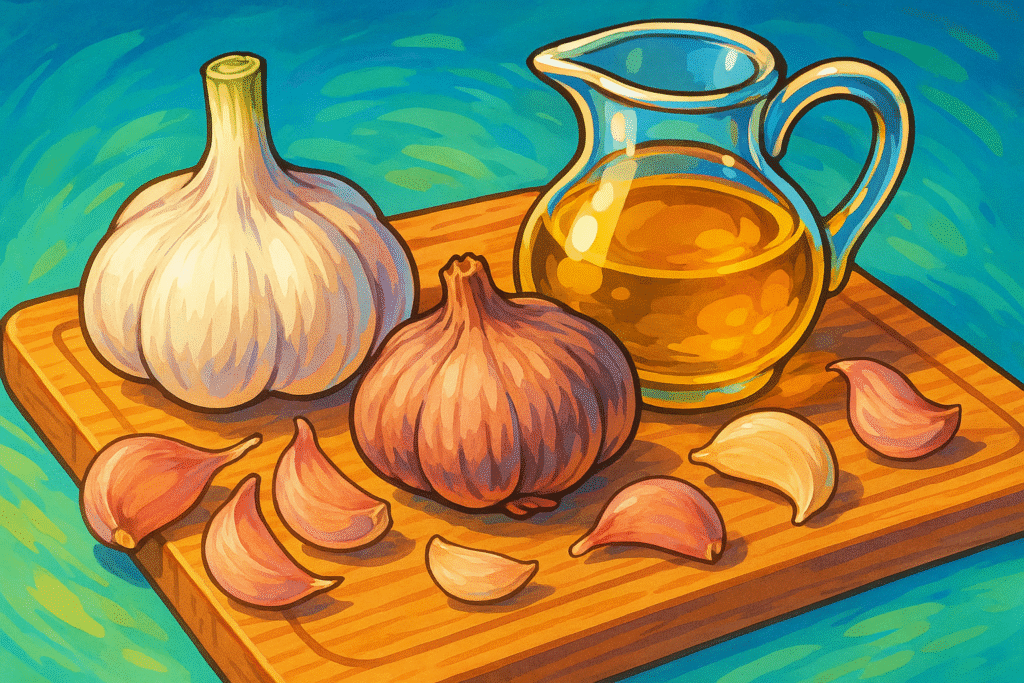Garlic (Allium sativum)

About Garlic
Garlic is one of the most powerful flavor builders in global cuisine — aromatic, spicy, and savory. Whether raw, roasted, fermented, or fried, it transforms dishes with its complex character.
Used across cultures for millennia, it’s the beating heart of sauces, soups, marinades, and countless regional spice bases.
The History of Garlic
Garlic has been cultivated for over 5,000 years, prized in ancient Egypt, Greece, China, and India for both culinary and medicinal use. Roman soldiers believed it gave them courage; in the Middle Ages, it was used to ward off disease (and vampires).
From aioli in Spain to suan ni bai rou in China, garlic is the backbone of countless iconic dishes.
The Science of Garlic
Garlic contains allicin, a sulfur compound that forms when cloves are chopped or crushed. Allicin gives garlic its sharp aroma and may offer antibacterial, antiviral, and anti-inflammatory effects.
It’s also rich in manganese, vitamin B6, and selenium.
The Geography of Garlic
Garlic grows best in temperate zones with cool winters. Major producers include China (by far the largest), India, South Korea, Spain, and California.
Varietal flavors vary wildly — from mild and nutty to hot and sulfurous — depending on growing conditions and type.
Varieties of Garlic
Softneck
Stores well, flexible stalks (used for braiding). Mild and common in supermarkets.
Hardneck
Bold flavor with a woody stem. Includes gourmet types with colorful cloves.
Elephant Garlic
Actually a leek relative. Huge cloves, very mild — ideal for roasting whole.
Rocambole
Hardneck variety with rich, earthy taste and easy-to-peel cloves.
Black Garlic
Fermented over weeks until soft, sweet, and molasses-like. Used in gourmet sauces and condiments.
FAQs All your questions about Garlic: answered
What’s the difference between hardneck and softneck garlic?
Hardneck has fewer, larger cloves and stronger flavor; softneck has more cloves and stores longer.
Can you eat garlic raw?
Yes — it’s pungent and hot. Raw garlic is often used in dips, dressings, and sauces like tzatziki.
What is black garlic?
It’s aged garlic, slowly fermented at low heat. The flavor is sweet and complex, with no pungency.
How do you get rid of garlic breath?
Chew fresh parsley or apple. Milk also helps neutralize sulfur compounds.